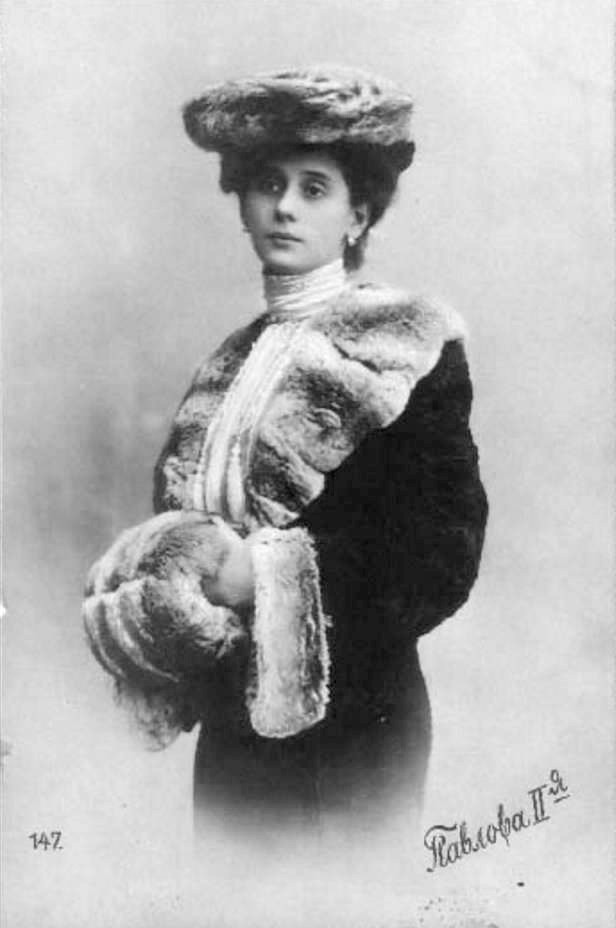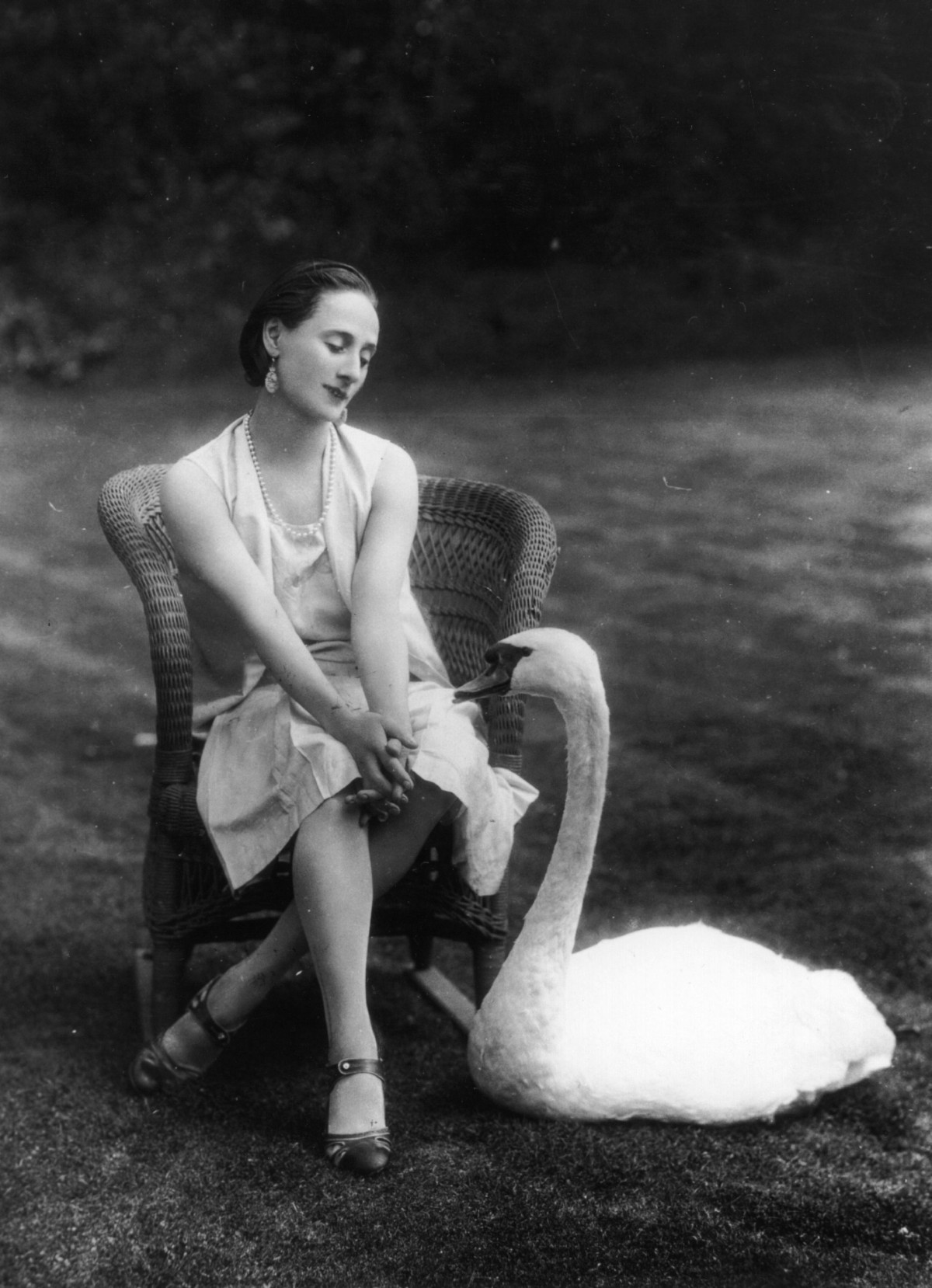Anna Pavlova, a name synonymous with balletic grace and artistry, remains one of history’s most celebrated and influential ballet dancers. Born Anna Matveyevna Pavlova on February 12th [O.S. January 31st] 1881 in Saint Petersburg, Russia, her journey into the world of dance began with a transformative childhood experience. A performance of The Sleeping Beauty in 1890 ignited a fervent passion within young Anna, setting her on a path to realize her dream of becoming a ballerina, despite early challenges and criticisms.
From St. Petersburg to Stardom: Pavlova’s Rigorous Training
At the age of ten, Pavlova gained admission to the prestigious Imperial Ballet School, a pivotal step in her ballet dancer journey. However, her initial years were not without hardship. Her physique, considered unconventional and delicate, drew mockery from classmates who cruelly nicknamed her “the broom” and “la petite sauvage.” Undeterred by this negativity, Pavlova demonstrated unwavering dedication and immersed herself in rigorous training. She benefited from the tutelage of renowned ballet masters like Christian Johansson, Pavel Gerdt, and Enrico Cecchetti, absorbing their expertise and refining her technique. By 1898, she had advanced to the classe de perfection under Ekaterina Vazem, marking her as a promising talent within the Imperial Ballet School.
Upon her graduation in 1899, it was evident that Pavlova possessed a unique quality that set her apart. Critics and teachers alike observed that her style evoked the ethereal and expressive qualities of the Romantic ballerinas of the 1840s. Her distinct approach to ballet was already beginning to captivate audiences and foreshadowed her future prominence.
 Anna Pavlova (ca. 1905)
Anna Pavlova (ca. 1905)
Early Career at the Imperial Ballet: Petipa’s Protégé
The legendary Marius Petipa recognized Pavlova’s exceptional talent early on, even during her student years. He was captivated by her dancing and cast her in A Fairy Tale at the age of ten, a ballet he choreographed for the Imperial Ballet School. Later, for her graduation performance, she danced a leading role in Petipa’s The Two Stars. Recognizing her potential, Petipa became a mentor to the young ballerina. Upon graduating in 1899, Pavlova bypassed the traditional corps de ballet and joined the Imperial Ballet directly as a coryphée, a testament to Petipa’s faith in her abilities.
Her initial season with the Imperial Ballet hinted at a brilliant career ahead. One of her earliest roles was the Fairy Candide in The Sleeping Beauty. However, on her debut night, the 18-year-old Pavlova was overwhelmed by nervousness, doubting her technical readiness. In a moment of panic backstage, fellow fairies Lyubov Egorova and Marie Petipa improvised new steps for her variation to ease her anxiety. Despite this impromptu change, Petipa, during an interval, firmly instructed Pavlova to adhere strictly to his choreography in the future, reportedly leading to her never being cast as Fairy Candide again.
Another early role of note was Zulma in Giselle, one of the attendants to the Queen of the Wilis. In February 1900, she originated the role of Frost in The Seasons, and in April, she debuted as Eos in The Awakening of Flora. This same year, The Awakening of Flora became the ballet in which she danced her first principal role, a significant milestone in her ascending career. In the 1900-01 season, Petipa elevated her to the lead role of Flora after Lyubov Petipa’s retirement. Despite initial technical challenges with a role originally created for the virtuosa Matilda Kschessinskaya, the 19-year-old Pavlova’s debut as Flora on September 23rd [O.S. 10th September] 1900 was a resounding success. Critic Bezobrazov praised her as “light and graceful,” and the role of the Goddess of the Flowers became a cherished part of her repertoire.
 Anna Pavlova as Nikiya (1902)
Anna Pavlova as Nikiya (1902)
Breakthrough to Prima Ballerina: La Bayadère and Leading Roles
The subsequent season saw Pavlova expand her repertoire with roles such as Princess Florine in The Sleeping Beauty, Anne and Venus in Bluebeard, the Pas de trois in Paquita, Gulnare in Le Corsaire, and Henriette in Raymonda. Her true breakthrough, however, arrived in 1902 when she was cast as Nikiya in La Bayadère. Under the coaching of Eugenia Sokolova, Pavlova prepared for the demanding role of the temple dancer. Her debut as Nikiya in April 1902 was transformative. Audiences were spellbound by her ethereal presence and delicate appearance, instantly recognizing the emergence of a new ballet star.
Following this triumph, Pavlova’s repertoire flourished with leading roles that showcased her dramatic talents, many of which Petipa personally coached her in, even after his forced retirement. Between 1902 and 1906, she debuted in roles such as Queen Nisia, Paquita, and Princess Aspicia. In 1903, she debuted as Giselle in Petipa’s final revival of Giselle and Ondine in Alexander Shiryaev’s revival of The Naiad and the Fisherman, both revivals specifically staged to highlight her unique artistry. Anna Pavlova officially achieved the esteemed rank of Prima Ballerina in 1906, solidifying her position as a leading figure in the world of ballet.
 Anna Pavlova as Princess Aspicia (1906)
Anna Pavlova as Princess Aspicia (1906)
International Tours and Ballets Russes: Expanding Horizons
Pavlova’s artistry soon transcended Russian borders. In 1904, she made her first international appearance, dancing the title role in Giselle in Warsaw. From 1908, her performances extended further westward as she toured with a troupe of Imperial Ballet colleagues, including Nikolai Legat and Shiryaev. In 1909, she joined Sergei Diaghilev’s Ballets Russes, a pivotal moment that exposed her to a broader international audience and avant-garde choreography. With the Ballets Russes, she performed leading roles in Mikhail Fokine’s groundbreaking ballets, including Le Pavillon d’Armide, Egyptian Nights, and Les Sylphides.
However, Pavlova’s tenure with the Ballets Russes was relatively short-lived. Dissatisfaction with Diaghilev’s directorship, particularly concerning artistic direction and musical choices, led her to withdraw from the 1910 Ballets Russes season. Notably, her aversion to Igor Stravinsky’s music played a role in her departure, as she reportedly refused to dance the lead in Fokine’s The Firebird due to her dislike of Stravinsky’s score. Following her departure, Pavlova embarked on a new chapter, founding her own company and assuming full artistic control over her career. She would later return to the Ballets Russes as a guest ballerina and made her final performance with the Imperial Ballet in 1913, marking the end of her association with the Imperial institutions and the full embrace of her independent path.
 Anna Pavlova in
Anna Pavlova in
Founding Her Own Company and Global Ballet Evangelism
With her own company, Pavlova curated a repertoire that included abridged versions of her beloved full-length ballets and excerpts, such as Giselle, The Magic Flute, La Fille mal gardée, The Awakening of Flora, The Fairy Doll, and Chopiniana (Les Sylphides). She also commissioned new, shorter ballets, often based on scenes from larger works, like Snowflakes, inspired by The Nutcracker. It was for her own company that Ivan Clustine created her iconic solo dances, including The Dragonfly, The California Poppy, and Invitation to the Valse.
Among these creations, The Swan (now universally known as The Dying Swan), choreographed for her by Mikhail Fokine in 1905, became Pavlova’s signature piece and most celebrated role. This short, emotionally resonant ballet, set to Saint-Saëns’s Le Cygne from Carnival of the Animals, perfectly encapsulated Pavlova’s dramatic and lyrical style and became synonymous with her name, captivating audiences worldwide.
 Anna Pavlova as the Dying Swan (1907)
Anna Pavlova as the Dying Swan (1907)
Ivy House and Final World Tours: A Lasting Impact
After leaving Russia, Pavlova established her permanent residence in London, purchasing Ivy House in Golders Green in 1912. Following successful tours of Britain and the United States between 1910 and 1914, and her farewell to the Imperial Ballet, she embarked on an unrelenting global touring schedule that would define the rest of her life. With her company, she traversed the globe, bringing the art of ballet to countries and audiences previously untouched by this art form, including Mexico, South America, India, China, Japan, and Australia.
These extensive tours, spanning two decades, brought Pavlova immense fame and recognition. She made a monumental contribution to popularizing ballet globally, becoming a symbol of dedication and artistic excellence. However, the relentless travel and demanding performance schedule took a physical toll.
 Anna Pavlova in the garden of Ivy House with her favourite pet swan, Jack
Anna Pavlova in the garden of Ivy House with her favourite pet swan, Jack
Untimely Death and Enduring Legacy
In 1931, while touring in the Netherlands, Pavlova contracted pneumonia after a train breakdown. She was taken to the Hotel Des Indes in The Hague, and upon learning of her illness, the Queen of the Netherlands sent her personal physician. Despite the best medical care, Pavlova’s condition worsened, developing into pleurisy.
Anna Pavlova passed away on January 23rd, 1931, at the age of 49, just weeks before her 50th birthday. According to her common-law husband, Victor Dandré, her last words were a poignant testament to her lifelong devotion to dance: “Get my Swan costume ready.” She was cremated, and her ashes are interred at Golders Green Crematorium in London, close to her beloved Ivy House.
 Anna Pavlova
Anna Pavlova
Pavlova’s legacy extends far beyond her remarkable performances. She captivated the world with her artistry, dedication, and pioneering spirit. Her global tours introduced ballet to countless new audiences, inspiring generations of dancers and solidifying ballet’s international appeal. Her iconic portrayal of The Dying Swan remains an enduring symbol of balletic expression and continues to be performed and reinterpreted worldwide. Anna Pavlova, the ballet dancer, remains an immortal figure in dance history, remembered for her extraordinary talent and unwavering commitment to her art form.
Pavlova: Beyond the Stage – Intriguing Facts
Beyond her stage persona, Anna Pavlova possessed strong opinions and passions. She held firm views on ballet music, famously disliking Igor Stravinsky’s compositions, a factor contributing to her departure from the Ballets Russes. An ardent animal lover, she kept numerous pets, including her cherished swans, Jack and Clara. Her influence reached beyond her own performances, inspiring choreographers like Sir Frederick Ashton. The “Fred step,” Ashton’s choreographic signature, a sequence of ‘arabesque, fondu, coupé, petit developpé, pas de bourée, pas de chat,’ was directly borrowed from Pavlova, a homage to the ballerina who profoundly impacted his work. Sir Robert Helpmann, the Australian dancer and actor, aptly noted that “every ballerina role that Ashton created could’ve been danced by Anna Pavlova,” highlighting her enduring influence on ballet and its creators.
Anna Pavlova’s Imperial Ballet Repertoire (Selected)
- The Fairy Candide in The Sleeping Beauty (**1899)
- Zulma in Giselle (**1899)
- Aurora, the Goddess of the Dawn in The Awakening of Flora (**1900)
- Flora, the Goddess of the Spring in The Awakening of Flora (**1900)
- Nikiya in La Bayadère (**1902)
- Giselle in Giselle (*1903)
- Paquita in Paquita (**1904)
- Kitri/Dulcinea in Don Quixote (**1905)
- Princess Aspicia in The Pharaoh’s Daughter (**1905)
- The Lilac Fairy in The Sleeping Beauty (**1907)
- Madeleine in Le Pavillon d’Armide (1907)
(* – original cast member of role in revival) (** – year of début performance in role)
Sources
- Money, Keith (1982) Anna Pavlova: Her Life and Art. UK: Alfred A. Knopf
- Pritchard, Jane with Hamilton, Caroline (2012) Anna Pavlova: Twentieth-Century Ballerina. London, UK: Booth-Clibborn Editions
Photos and images: © Dansmuseet, Stockholm © Большой театр России © Victoria and Albert Museum, London © Государственный академический Мариинский театр © CNCS/Pascal François © Bibliothèque nationale de France © Musée l’Opéra © Colette Masson/Roger-Viollet © АРБ имени А. Я. Вагановой © Михаил Логвинов © Михайловский театр, фотограф Стас Левшин. Партнёры проекта: СПбГБУК «Санкт-Петербургская государственная Театральная библиотека». ФГБОУВО «Академия русского балета имени А. Я. Вагановой» СПбГБУК «Михайловский театр». Михаил Логвинов, фотограф. Martine Kahane.


